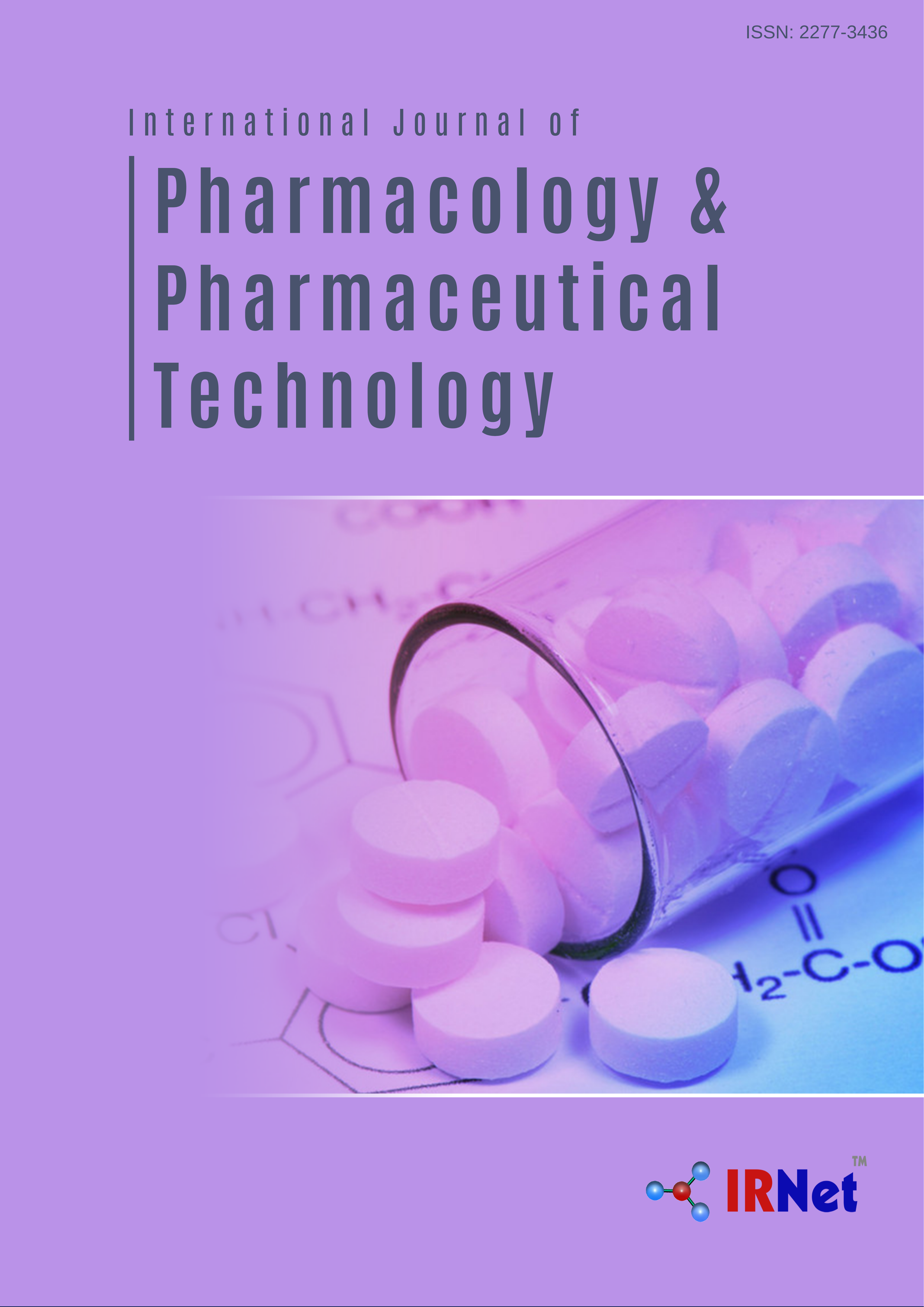International Journal of Pharmacology and Pharmaceutical Technology IJPPT
ISSN: 2277-3436
Conference

Abstracting and Indexing


IJPPT
eparation of Gefitinib Loaded Polycaprolactone Microcapsule Preparation of Gefitinib Loaded Polycaprolactone Microcapsule For Controlled Release Drug Delivery System For Controlled Release Drug Del
Priyangi Roy
Department of Pharmaceutics, Gayatri College of Pharmacy, Sambalpur, India
Purusattam Gartia
Department of Pharmaceutics, Gayatri College of Pharmacy, Sambalpur, India
Aritra Nayek
Department of Pharmaceutics, Gayatri College of Pharmacy, Sambalpur, India
Asok Kumar Samanta
Department of Pharmaceutics, Gayatri College of Pharmacy, Sambalpur, India.,
Abstract
The aim of the study was to prepare gefitinib-loaded polycaprolactone microcapsules by simple conventional solvent evaporation method with a view to achieve controlled release of the drug following subcutaneous administration once in a week for targeted therapeutic action especially locally. The microcapsules were prepared using different drug-polymer ratios (1:2, 1:4 and 1:6) and three different stabilizers/surfactants (0.25% w/v, 0.50% w/v and 0.75% w/v) concentrations in aqueous phase. Depending upon the formulation variables, the highest drug entrapment efficiency and the lowest average particle size diameter of the microcapsules were found to be respectively 90.19±2.61 % and 201±3.05 µ. Comparison of Fourier Transform Infra Red spectra of gefitinib, polycaprolactone, their physical mixture and the drug- loaded microcapsules showed the absence of drug -polymer interaction .The in-vitro dissolution study showed that the release of drug from the microcapsules was almost complete on day seventh and the drug release followed Higuchi model.
Recommended Citation
1] Ciardiello F, Caputo R, Bianco R, Damiano V, Pomatico G, De Placido S, Bianco AR, Tortora G. , Antitumor effect and potentiation of cytotoxic drugs activity in human cancer cells by ZD-1839 (Iressa), an epidermal growth factor receptor-selective tyrosine kinase inhibitor. Clinical Cancer Research, 6, 2000, 2053-2063. [2] Yan Y, Lu Y, Wang M, Vikis H, Yao R, Wang Y, Lubet RA, You M., Effect of an Epidermal growth factor receptor inhibitor in mouse models of lung cancer. Mol Cancer Res., Dec, 4(12), 2006, 971-81. [3] Li J, Kleeff J, Giese N, Buchler MW, Korc M, Friess H. Gefitinib ('Iressa', ZD1839), a selective epidermal growth factor receptor tyrosine kinase inhibitor, inhibits pancreatic cancer cell growth, invasion, and colony formation. Int J Oncol, Jul, 25(1), 2004, 203 10. [4] Cohen MH.,William GA, Sridhara R,Chen G, Pazdur R., FDA Drug approval summary : Gefitinib (ZD 1839) (Iressa(R)) tablets. Oncologist, 8, 2003, 303 306. [5] Sinha VR, Bansal, K, Kaushik, R, Kumria, R, Trehan A., Polycaprolactone Microspheres and Nanospheres: an overview. International Journal of Pharmaceutics, 278, 2004, 1–23. [6]. U.Edlund, A.C. Albertsson, Degradable Polymer Microspheres for Controlled Drug Delivery, Advances in Polymer Science, Springer-Verlag Berlin Heidelberg, Vol. 157, 2002, 67 -112. [7]. Williams; Richard S. , Polyester moulding compositions, Patent No.4540729, September 10, 1985. [8]. B. K. KIM, S. J. HWANG, J. B. PARK, & H. J. PARK, Characteristics of felodipine-located poly(e caprolactone) Microspheres. Journal of Microencapsulation, 22(2), March 2005, 193-203. [9]. John Coates, Interpretation of Infrared spectra, a practical approach. Encyclopedia of Analytical Chemistry. R. A. Meyers (Ed.). John Wiley & Sons Ltd, Chichester, 2000, Pp.10815-10837. [10]. Dillen, K., Vandervoort, J., Van den Mooter, G., Verheyden, L., Ludwig, A., Factorial Design, physicochemical characterisation, and activity of ciprofloxacin-PLGA Nanoparticles. International Journal of Pharmaceutics, Vol. 275, No. 1, 2004, 171 187. [11]. Mainardes RM, Evangelista RC, Praziquantel-loaded PLGA nanoparticles: preparation and characterization. J. Microencapsulation , Feb. 22(1), 2005,13-24.